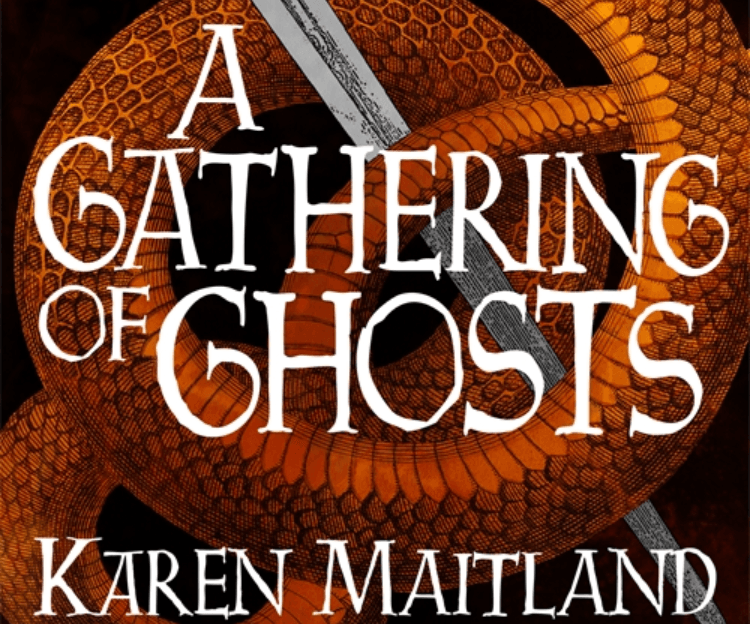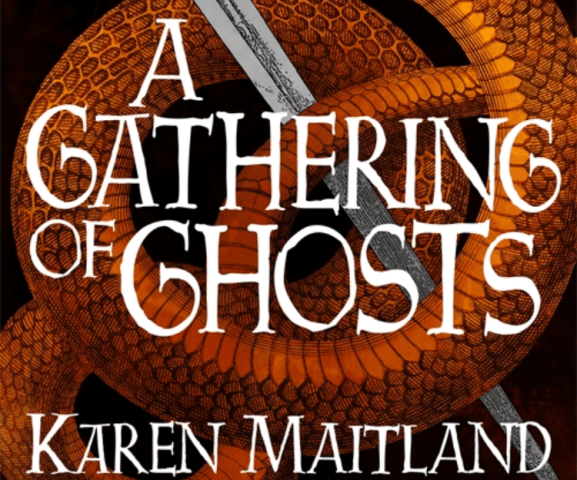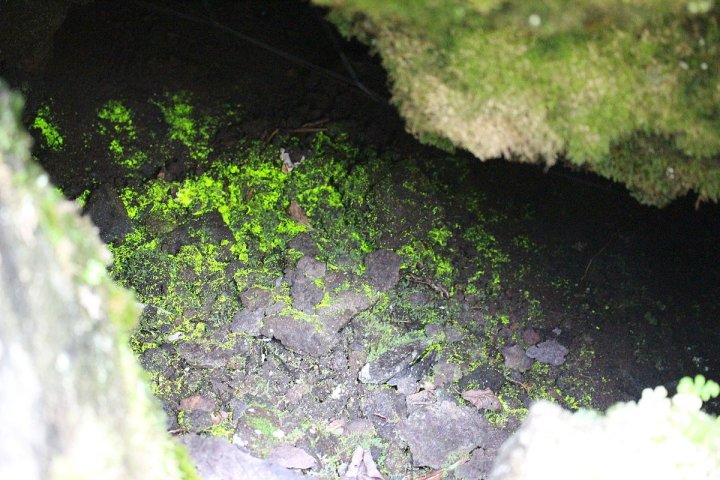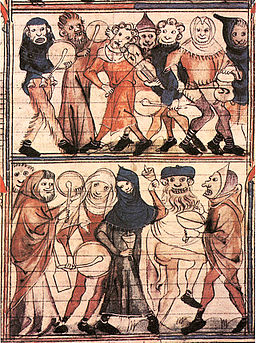A Gathering of Ghosts – Tuesday Tidbits

For her new novel, A GATHERING OF GHOSTS, Karen Maitland picks out some special Tuesday Tidbits relating to Dartmoor where the novel is based:
Long-cripple
Long-cripple is the Devonshire dialect word for a snake, usually an adder. It can also mean a dragonfly, lizard or slowworm (blindworm), all once believed to be venomous. Some leech wells or healing wells were given the name long-cripple, either because they cured snakebites or because they cured the same ailments as adder skins were thought to do, such as headaches and rheumatism. The ‘long-crippler’ spring in Totnes, said to cure eye problems, probably got its name because the slowworms were used to treat eye ailments
Sledges
For centuries, wooden sledges were a vital form of transport on Dartmoor. They were not just used in snow, but were built to drag fodder, kindling and other supplies across the open moorland all year round. With their broad metal runners, they could be pulled over heather, rough grass, stones and mud much more easily than a wheeled cart. Old horseshoes were hammered into rough circles and nailed to the sides of the sledge, through which ropes or poles could be attached, allowing the sledge to be dragged by horses or people.
The Great Famine
The spring of 1315 saw the beginning of the Great Famine which affected the whole of Europe. It was caused by unusually heavy rain. Crops and animal fodder rotted and stored food went mouldy or became contaminated with deadly ergot. Herds of starving animals had to be slaughtered, but the meat couldn’t be preserved because the salt needed couldn’t be evaporated. It is thought between 10% and 25% of the population died, with many others turning to crime and violence to survive. The cold, wet weather may have been triggered by volcanic dust from an eruption.
St Brigid’s Day
With the coming of Christianity, the Celtic feast of Imbolc, on 31 January, became St Brigid’s Day. On St Brigid’s Eve, unmarried girls would make a brideog, a doll of reeds. Young men were invited in for food and drink but had to treat the brideog as if she were a saint. Before the girls went to bed, the hearth ash was raked smooth and each girl would lay a cloth in front of it. In the morning, they’d examine the cloths for any sign that St Brigid had walked over them. The girls whose cloth she’d marked would be married within the year.
‘Cross and Pile’
‘Cross and Pile’ was a popular medieval game, betting on the toss of a coin, known today as ‘Heads or Tails’. Medieval coins were produced by placing a metal disc between two patterned dice, then striking the upper die with a hammer to stamp the pattern. The top pattern incorporated a cross or a Christian symbol. The bottom die was called a pile, so the reverse side of the coin became known as the pile or pyl. King Edward II was so addicted to Cross and Pile that he borrowed money from courtiers and servants to keep playing.
Long Houses
Medieval Dartmoor long houses consisted of just two rooms built sideways on a slope. The livier, at the higher end of the slope, was where the family lived. At the lower end was the shippon, where livestock were housed. The livier had a central fire, but no chimney. An open drain ran through the middle of the floor and out through the wall at the lowest end of the shippon. Animals and people used the same door. The partition between livier and shippon was often only a half wall, so the heat from the animals helped keep the humans warm.
The Knights of St John
St John Ambulance Association was established 1878, but it’s roots are buried deep in the eleventh century and the Order of the Knights of St John of Jerusalem, also known as Knights Hospitaller, or Knights of Malta. In 1080, the knights founded a hospital in Jerusalem on the site where, according to legend, the angel Gabriel foretold the birth of St John the Baptist. It provided care for pilgrims. Hospitals then were not primarily for the sick and injured, although physicians and surgeons did work in them: they were intended to offer hospitality, a place where the elderly, the infirm, orphans and travellers could rest and be provided with safe shelter, food and spiritual comfort.
The Knights Hospitaller
The fifteenth-century England, the Knights of St John, also known as the Knights Hospitaller, or the Knights of Malta, were given the dubious privilege of collecting the bodies of executed felons and ensuring they were buried. Criminals who were hanged at the time died by slow strangulation, not by the ‘long drop’ which broke the neck. It was not uncommon for corpses to later revive once cut down and tended by the knights, leading to all kinds of clashes with the authorities over whether they should be re-hanged.
Brideog
Brideog – pronounced bree-jog – means little Brigid. At the Celtic feast of Imbolc, on 31 January, long lengths of rushes or straw were twisted into a doll and dressed in white to represent the goddess Brigid. The brideog was sprinkled with water taken from a Brigid’s Well, Bryde’s Well or Bride’s Well, and carried by unmarried girls in procession to a great feast where the goddess was offered food, drink and fire, in gratitude for bringing them safely through winter, and asked to bring new life. The custom of leaving brideogs at wells for healing or good luck continues to this day.
Blood Maggots
In the Middle Ages, frogs were believed to be produced by spontaneous generation, as were a number of animals whose juvenile form didn’t resemble the adult, such as flies, which were thought to be generated by corpses. Some people advocated beating the corpses of calves to bring out the ‘blood maggots’, which would eventually turn into bees, while others maintained that bees sprang from the corpses of oxen, hornets from horses and wasps from donkeys. Most believed that frogs were born from mud, not surprisingly because they would be seen in great numbers after floods.
Golden Frogs
In many ancient religions, frogs were associated with goddesses and venerated as symbols of regeneration and fertility. Some holy wells, such as the one in Bovey Tracey on Dartmoor, were home to tiny golden frogs. These golden frogs were regarded as sign that the well had been blessed, thanks to an act of kindness by a villager towards a beggar woman. Originally, the beggar was believed to be the Celtic goddess Brigid in disguise, and in later centuries the Virgin Mary.
Frog Well
During the witch trials of the sixteenth and seventeenth centuries, frogs were one of the creatures that witches were accused of using as their ‘familiars’ to aid them in their spells or to spy on their neighbours. Lucifer and three of his imps are said to dwell in the form of frogs in Frog Well, Acton Burnell. While the three imps are often seen mocking those who look into the water, the Devil, true to his wicked nature, cunningly hides in the well, waiting to do mischief.
Bel Tor
If you climb Bel Tor on Dartmoor take care to ensure that you leave before the sun sets for, according to legend, on dark nights a ghostly herd of white horses gallops through Ipplepen village towards Bel Tor. When they reach the summit of the tor, they leap to their deaths and vanish, sweeping anyone foolish enough to be standing in their path over the edge with them.
Ashwell Spring
On Palm Sunday, young people drink honey-sweetened water from Ashwell Spring in Bovey Tracey on Dartmoor, in the hope of discovering their future partner. This tradition is said to have arisen from the legend that a wounded knight and a sick girl both separately confessed to a hermit that they loved one another but didn’t think their love was returned. The hermit sent each of them to bathe in the spring to cure their ailments in the hope they’d start talking. It worked and they wed.
River’s Cry
When the River Dart on Dartmoor is in full spate and this coincides with a north-westerly wind, a loud booming sound is heard, known as the ‘river’s cry’. It was believed that the Dart claimed a human heart in tribute every year and the ‘Dart’s Cry’ was the warning that someone would shortly die. There’ve been many tales of people hearing the cry and hurrying home to news of an unexpected death. But the river’s cry has also saved lives when the booming sent them scrambled out of the river in fright, just before a huge wall of water swept past, which would have carried them to their deaths.
Going Bodmin
Thanks to Doc Martin, many are now familiar with the phrase, ‘Going Bodmin’. But for centuries, Bodmin Moor was famous for its boussening wells where those thought to be ‘mad’ were dragged to be dipped. At St Nunne’s well, Altarnum, the sufferer was compelled to stand with his back to the well, then suddenly struck in the chest knocking him into the water. He was repeatedly ducked till his strength was gone, then led to the church where masses were said over him. If that didn’t work, the dipping was repeated until the madness left him or he died.
Childe
Childe was a wealthy fourteenth-century landowner from Plymstock. While hunting on Dartmoor, he was caught by a snowstorm on Cater’s Beam, a ridge surrounded on three sides by the infamous Fox Tor Mire. He tried to stay alive by slaying his horse, eviscerating it and crawling inside the steaming carcass. He was found, frozen to death, by monks from Tavistock who claimed the body, for whoever buried him would inherit his lands. Monks set out from Plymstock to ambush them and snatch the prize, but the Tavistock monks evaded them, burying Childe in their abbey and so gained his lands.
Pixie-led
It’s easy to become disorientated on Dartmoor, especially if a mist descends. Locals called this being pixie-led, believing that malicious pixies cast spells to lure travellers into bogs to send them walking in circles until they died. They thought pixies could even imitate bushes and rocks to trick people into thinking they were on a familiar track. A nobleman and his wife were walking on the Dartmoor when they were enveloped by an enchanted mist. They wandered for hours, pixie-led, until near to death the stumbled across Fitz’s Well, drank from it and the spell was broken. They say that if you drink from this well on Easter Morning, you will discover who you are destined to be. But if you ever find yourself pixie-led, you might try the local rememdy of putting your coat on inside out to reverse the spell.
Great Hound Tor
Up until the nineteenth century, there was a widespread belief that witches could transform into hares. One Dartmoor legend tells of a farmer who set his dogs upon an old woman gleaning on his land. She transformed into a hare to escape. The man chased her mercilessly over the moor, urging his hounds to rip her to pieces, but when she reached the top of a tor, she changed back into an old woman and cursed the farmer and his hounds. They were turned to stone and remain forever on the tor, which is known as Great Hound Tor.
Stone Circles
There are many stone circles on Dartmoor. Most are the remains of Bronze Age round houses, which were often later used as pinfolds for livestock, but others are henges. For centuries, local people believed that it was not wise to trespass inside them. But one man decided to build a hut inside the stone circle at Foales Arrishes on Rippon Tor. His friends warned against it, but he refused to listen. On the first night he slept there, the Devil flew down, destroyed the hut and carried him away. No trace of man or hut was ever seen again.
Widecombe Church
During the Middle Ages, only certain churches on Dartmoor were licensed for burial. One was Widecombe Church, and mourners had to carry coffins many miles across the moors from outlying villages to reach it. There is a flat rock near Widecombe where the coffin could be laid while the mourners rested. The story goes that a burial party was carrying an evil old man to Widecombe and set his coffin down on the stone. The moment the coffin touched the granite rock, it was struck by a mighty thunderbolt, which burned coffin and corpse to ashes, and cracked the stone in two.
Branscombe’s Loaf and Cheese
In the twelfth century, Walter Branscombe, Bishop of Exeter, and his servant were lost and starving on Dartmoor. A stranger appeared and offered to share his bread and cheese, if the bishop called him ‘Master’. The bishop was so hungry he started to say the word, but the servant noticed a cloven hoof beneath the stranger’s long cloak and dashed the food from his hand. The loaf and cheese landed on Corn Ridge where they were turned to stones, and with a howl of fury the stranger vanished. The rocks are now known as ‘Branscombe’s Loaf and Cheese’.
Whisht Hounds
Wisht or Whisht Hounds of Dartmoor were spectral dogs, also known as hellhounds. Wisht meant to bewitch or invoke evil. They hunted in packs at night, preying on unwary travellers. After the coming of Christianity, the hounds were said to snatch unbaptised babies from their beds and devour them or drop their bloody corpses at the feet of their parents who had neglected to christen them. In winter it might have been months before babies could be taken over the moors for baptism, so to protect them, pieces of consecrated bread (the Host) was placed beneath the children’s pillows.
Saxon Well
In the Middle Ages, those suffering from ailments of the eyes would make long pilgrimages to bathe them in the Saxon Well in the village of Widecombe on Dartmoor, which was said to guarantee a cure. So soothing was this water, legend has it that the Devil himself once came to the well to wash the soot of hell from his eyes and, as he did so, a great sizzling was heard across the moor.

Karen Maitland’s A GATHERING OF GHOSTS publishes 6th September






